Affiliate links on Android Authority may earn us a commission. Learn more.
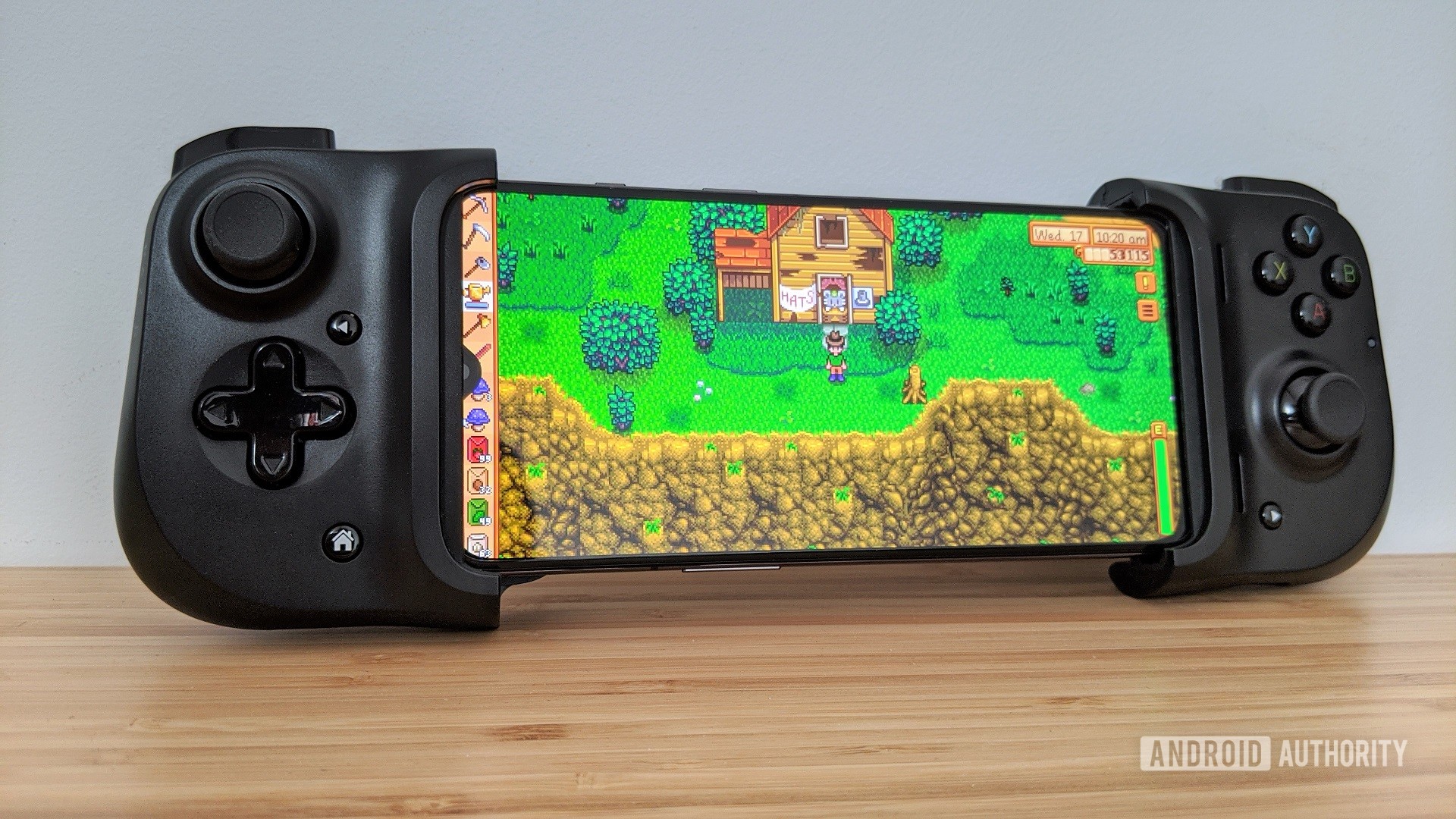
Razer Kishi
What we like
What we don't like
Razer Kishi
Despite being a 50-billion-dollar industry, smartphone gaming is really still finding its footing. Most smartphone controllers on the market are simply console controllers with a smartphone stand attached, which can lead to bulky contraptions that are a major hindrance to portability. Switch-like controllers, such as the Razer Junglecat, seek to solve this problem by sandwiching your phone between two gamepads. Can Razer’s latest effort solve the compatibility problems that plagued previous efforts? Here is Android Authority’s Razer Kishi review.
What is the Razer Kishi?
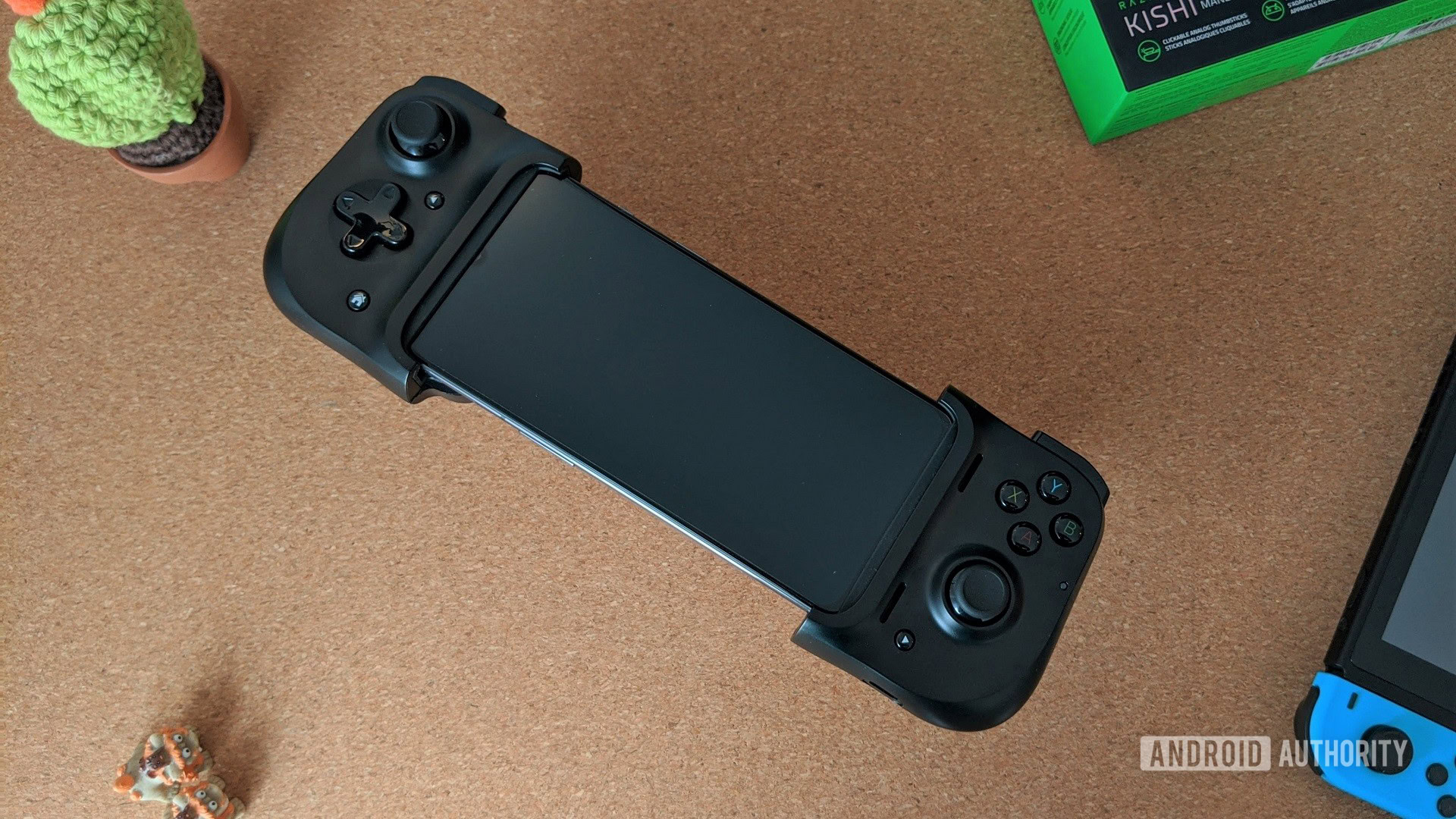
The Razer Kishi is a telescopic mobile controller that fits snugly around a wide variety of smartphone screens. It connects directly to your phone’s USB-C port, which offers much lower latency than Bluetooth controllers. Another advantage of this approach is that the controller doesn’t ever run out of battery life or drop the connection. However, this also means that the Razer Kishi is mobile-only; it isn’t designed to work with PCs or consoles.
Still, despite its hefty design that’s significantly larger than Nintendo’s Joy-Cons, it’s one of the best mobile gamepads on the market. The Razer Kishi’s price tag is set at $79.99 / €89.99, which is expensive though still cheaper than previous Razer gamepads such as the Junglecat and Raiju. Most off-brand, Switch-like controllers are around $50, making the Kishi’s price a premium yet still competitive.
How does the Razer Kishi work?
This Razer gamepad was made in partnership with Gamevice, which makes a number of similar wrap-around smartphone and tablet controllers. The Razer Kishi is essentially two halves of a controller connected by an elastic band in the back. Your phone plugs into the USB-C connector on the right hand side, and slips into another padded slot on the left for a secure fit.
When not being used, the controller folds up into a compact shape that’s smaller and lighter than a traditional controller, making it perfect for taking with you wherever you go. The two sides lock together so you don’t have to worry about it flopping around in your bag. In fact, the latches on the back could be stiff and difficult to open when locked.
While not in use, the Razer Kishi folds into a light, compact package.
Once plugged in, it works just like any other controller plugged into a phone with an OTG cable. It isn’t required, but there is a Razer Kishi app on the Google Play Store that lists all of the games compatible with the controller. You’ll also use the app to update the firmware of the controller, so it’s worth the download if you buy the Kishi.
It has all the inputs you’d expect from a console controller: an eight-way D-pad, two clickable analog sticks, two triggers, two bumpers, and more.
It should go without saying that the Razer Kishi will not work for games in portrait mode, but few of these support controller inputs anyway.
Who is the Razer Kishi for?
Both casual and avid gamers alike will find a lot to like in the Razer Kishi. It’s relatively compact, but it’s also larger than Nintendo’s Joy-Cons or the Razer Junglecat. This makes it a better choice for people with large hands. It’s also exceptionally light, so holding it for long gaming sessions won’t wear you out.
Whether it’s for retro gaming on an emulator or playing controller-enabled games such as Fortnite, Dead Cells, or Stardew Valley, the Kishi really gets the job done. The only downside is a slightly mushy D-pad, so fighting game aficionados might want to look elsewhere.
What phones are compatible?
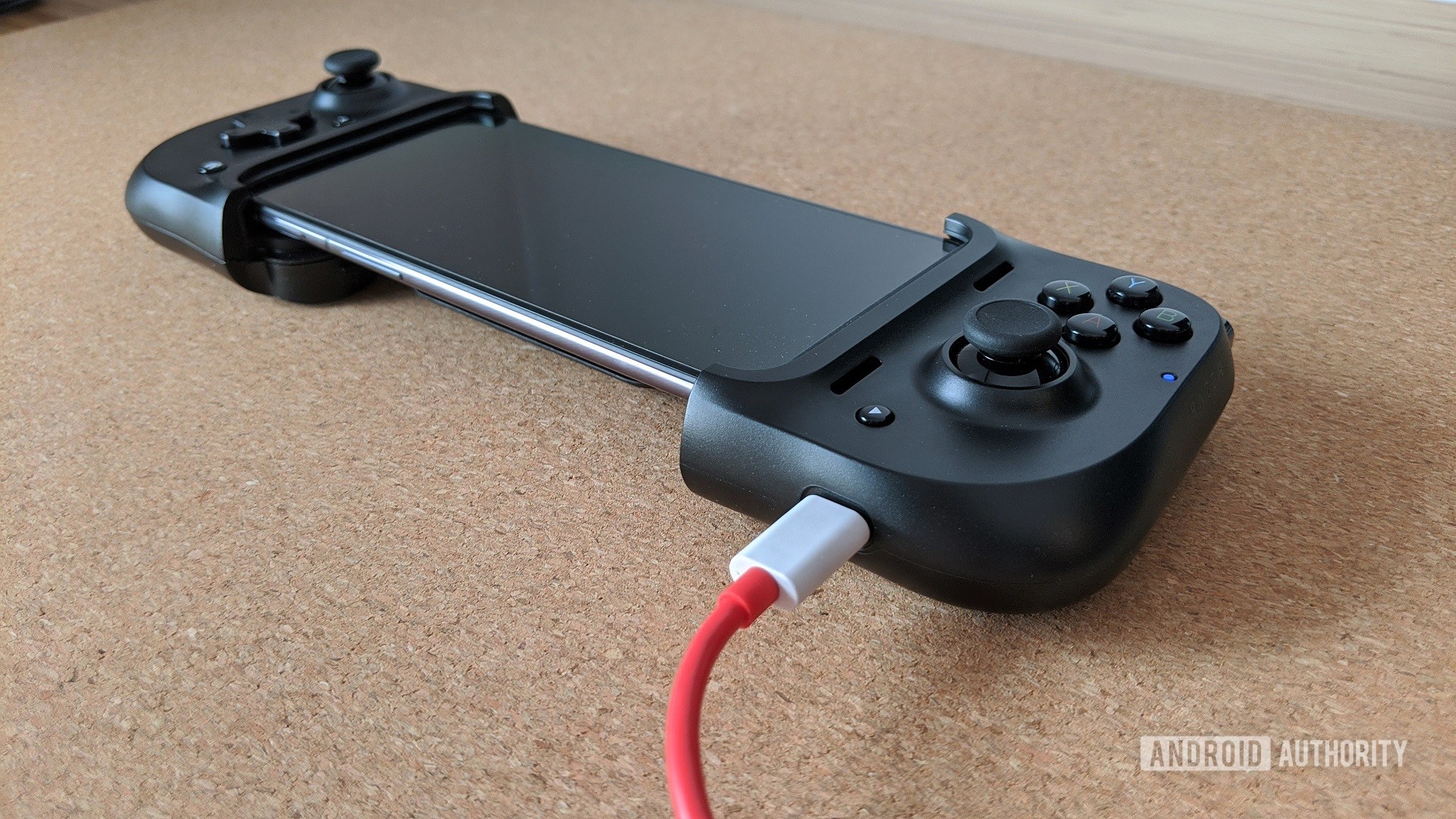
One of the best things about this Razer gamepad is just how widely compatible it is. The list of Razer Kishi-compatible phones covers just about any Android phone with USB-C charging. (You will almost certainly need to remove any phone cases while using the controller.) The inside is soft rubber, so you don’t have to worry about it scratching your phone or slipping loose while gaming.
Compatibility extends from smaller phones such as the Google Pixel 3 to large phones such as the Samsung Galaxy Note 10 Plus and other gaming phones. Extremely large phones such as the Samsung Galaxy S20 Ultra will not fit. Razer lists the following Razer Kishi compatibility limits:
- Height: 145.3 – 163.7mm
- Width: 68.2 – 78.1mm
- Depth: 7.0 – 8.8mm
By way of comparison, the Razer Junglecat requires a different case for each model of phone, severely limiting compatibility. Those issues are virtually eliminated with the Razer Kishi. There is a downside to this approach, however, as headphone ports on the top or bottom of a phone will be covered and unusable. There are two relief holes for bottom firing speakers, but the only way to get decent sound is with a good pair of Bluetooth headphones.
If you’re thinking of using a pair of USB-C headphones or a wired gaming headset, they won’t work either. The USB-C port on the bottom of the controller is only for pass-through charging. This is a bit disappointing. Adding a headphone jack to the body of the Razer Kishi would have truly made it the perfect mobile gamepad.
Does the Kishi work with iPhones?
Since the Razer Kishi plugs directly into a phone’s charging port, there are two separate versions, one for Android and one for iOS. The Android version of the Razer Kishi was released on June 9, but the version for iPhones isn’t expected until later this summer.
How about cloud gaming?
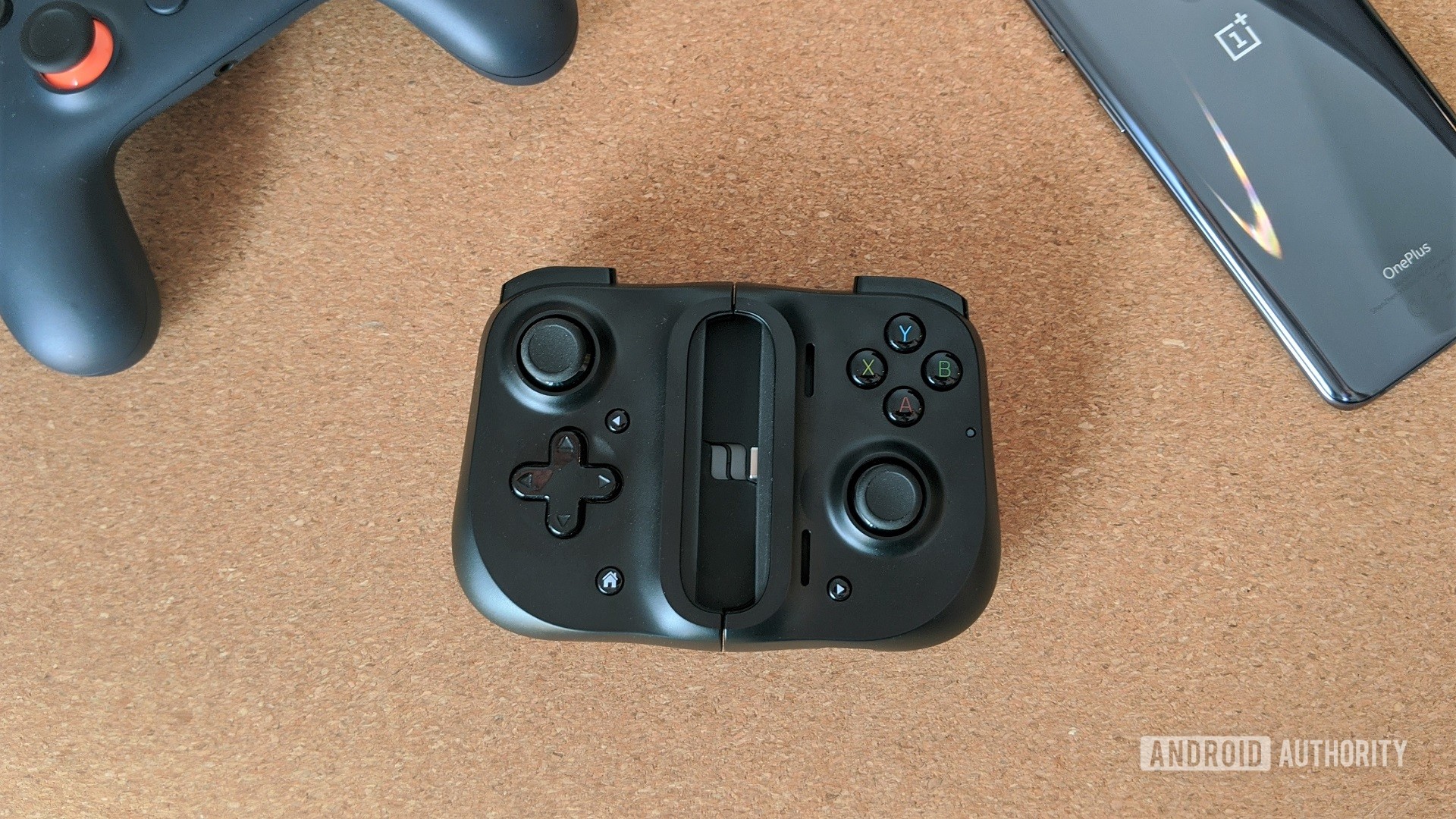
Cloud gaming has grown immensely in popularity with the official release of Google Stadia and GeForce Now, and Razer promotes its gamepad as “cloud-gaming compatible.” This is true, and for the most part cloud gaming services works flawlessly with the plug-and-play controller.
While working on this Razer Kishi review, I had initially run into some stuttering when using Stadia on the Pixel 3, which was instantly fixed by removing the Kishi and using the standard Stadia controller. I suspect the tight-fitting vise might have been partially blocking the Wi-Fi antenna in the phone, causing performance issues.
Thankfully, this was not always the case with the Pixel 3, and I never encountered issues when using cloud gaming services on the OnePlus 7. Playing console-quality games on your phone is truly something, and the Razer Kishi is an excellent option to get you there, competing with claw-like attachments for traditional controllers.
What I like about the Razer Kishi
- Size: When attached, the controller is larger than Joy-Cons and feels good in the hand. When folded, it’s light and boasts a small footprint.
- Compatibility: The Razer Kishi fits a huge variety of phones, and works with just about any controller-supporting mobile game.
- Build: Unlike many Switch-like competitors (including Joy-Cons themselves), this Razer gamepad feels sturdy.
- Charging: Not only will the Razer Kishi never run out of battery, the charge-through port ensures your phone won’t either.
- Inputs: Two triggers, two bumper buttons, and clickable joysticks mean full compatibility with everything from mobile games to AAA titles on cloud gaming platforms.
What I don’t like about the Razer Kishi
- No wired headphones: Even if your phone has a headphone jack, it won’t work with the Razer Kishi. The controller obscures the entire top and bottom of the phone.
- Average D-pad: While the D-pad isn’t the worst I’ve used, it sits a bit loose in the body of the controller and feels slightly mushy.
- Case compatibility: The tight fit for most phones means you will need to remove your case while using the controller.
Razer Kishi review: Is it worth it?
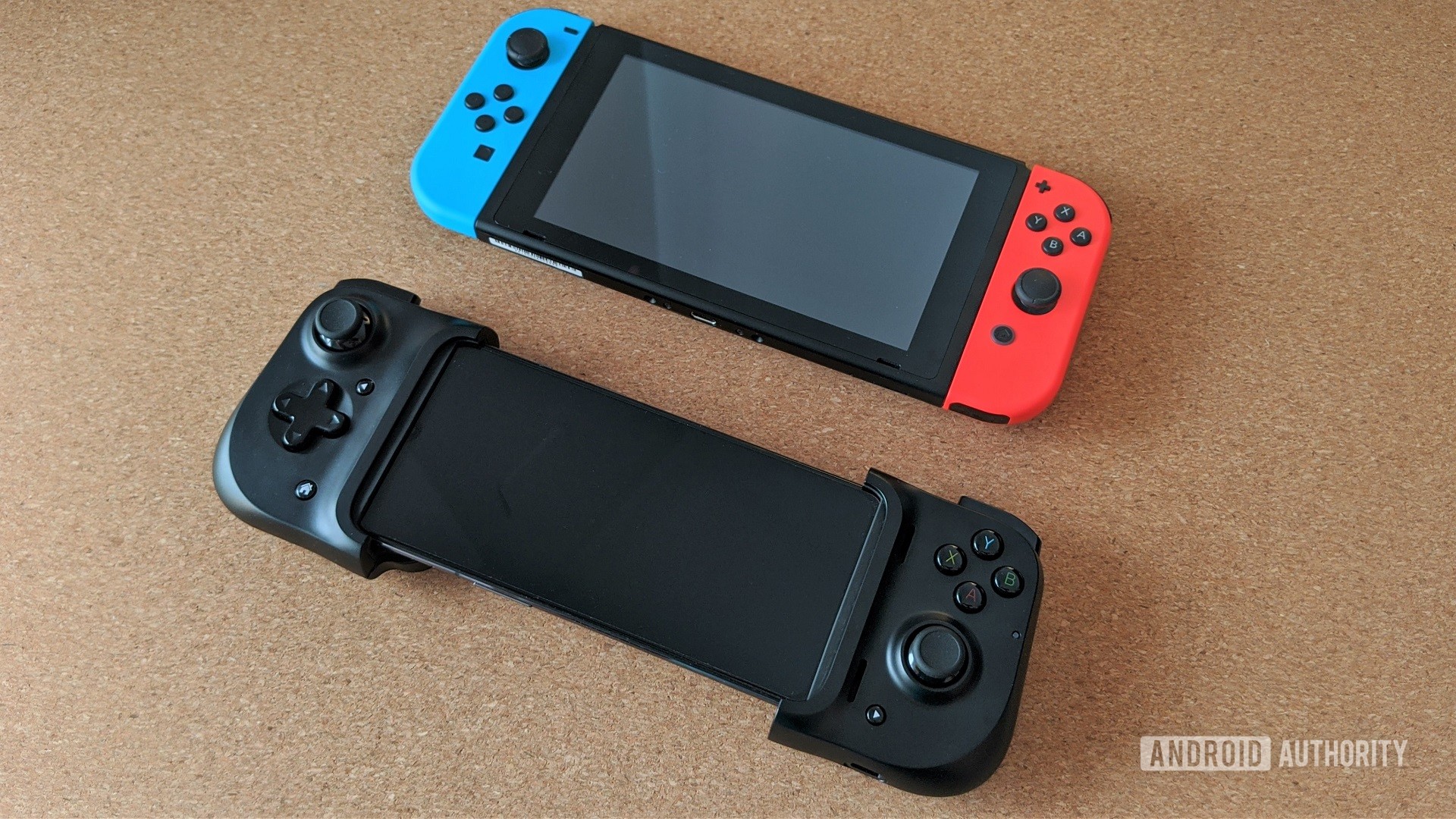
If you’re looking for a premium, portable, mobile-only controller, the Razer Kishi is a fantastic choice. The lack of wired headphone support will be a major downside for some, but headphone jacks are increasingly rare on new phones anyway, and Bluetooth appears to be the way forward.
There are some cheaper Switch-like controller options on the market, but most rely on Bluetooth connections and can’t compare on build quality. It’s worth spending a bit more for the Kishi if you’re seeking something sturdy.
As for more traditional controllers, we’ve got a whole list of alternatives. Our favorite is the Xbox One controller for its wireless and wired support, plus the variety of aftermarket clips to attach smartphones of any size. The Xbox controller isn’t as light or portable as the Razer Kishi, but it will perform better on cloud gaming platforms and leave your headphone jack uncovered.